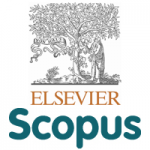Humildad y purificación: continuidad y variación del tipo iconográfico del lavatorio de pies / Humility and Purification: Continuity and Variation of the Iconographic Type of Foot Washing
Resumen
ABSTRACT: Christ’s washing of the feet of the apostles is one of the iconographic types that make up the theme of The Last Supper. This event is first narrated in the Gospel of John, who relates it in detail, something that the synoptic Gospels do not do. The main objective of this article is to carry out a diachronic study of the continuity and variation of this typology. This essay provides research on this iconographic type from its origin and development in the East and further development in the West after the fall of Constantinople. To achieve this goal, I have utilized the iconographic-iconological method, paying close attention to the relationship between the written and visual sources. Studying these biblical and patristic texts allows us to reflect on the significance of washing understood as a process of purification, of the forgiveness of sins, and as a gesture of humility on the part of Christ. Finally, I deal with some aspects relating to the context related to the conceptual and imaginary scope of the iconographic type. I deal mainly with issues relating to the Councils and Synods that established the sacraments related to penance and confession, as well as those that formed the basis of the practice of washing within the liturgy.
KEYWORDS
Lavatory; Modesty; Purification; Penance; Confession.
RESUMEN: Uno de los tipos iconográficos que forman parte del tema de la Última Cena es el del lavatorio de pies de Cristo a los apóstoles, pasaje narrado únicamente en el Evangelio de Juan quien lo desarrolla de forma detallada a diferencia de los evangelios sinópticos. El objetivo principal de este artículo reside en realizar un estudio diacrónico de la continuidad y variación de esta tipología desde su nacimiento en Oriente y su posterior desarrollo en Occidente tras la caída de Constantinopla. Para alcanzar dicho objetivo, se ha utilizado el método iconográfico-iconológico atendiendo a la relación de las fuentes con las imágenes. El estudio de estos textos bíblicos y patrísticos, ha permitido realizar una reflexión acerca de la significación del lavatorio entendido como un proceso de purificación, de perdón de los pecados y como gesto de humildad por parte de Cristo. Finalmente, se han abordado algunos aspectos relativos al contexto donde se ha puesto en relación el tipo con su ámbito conceptual e imaginario tratando cuestiones relativas a los concilios y sínodos donde quedaron fijados los sacramentos relativos a la penitencia y confesión, así como aquellos donde se asientan las bases de la práctica del lavatorio dentro de la liturgia.
Palabras clave
Texto completo:
PDFEnlaces refback
- No hay ningún enlace refback.
URL: http://ojs.uv.es/index.php/IMAGO
Administración: C/ Universitat, 2 · 46003 Valencia.
M.Elvira.Mocholi@uv.es, Elena.Monzon@uv.es, mahiques@uv.es
ISSN digital: 2254-9633 / ISSN impresión: 2171-0147
MÉTRICA EN SJR BASADA EN SCOPUS
INDEXACIÓN






![]()







